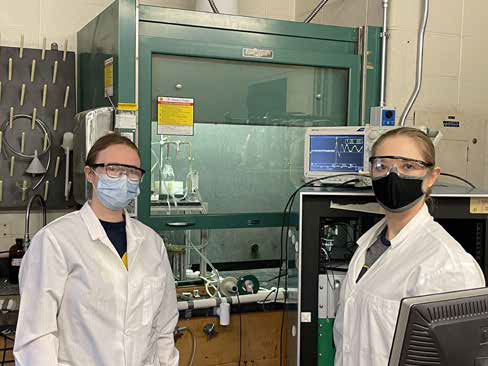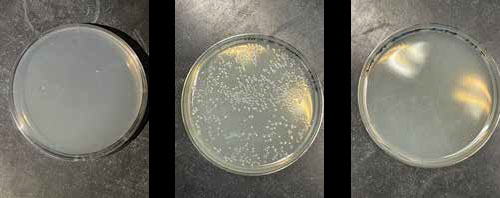
Solar powered, point-of-use plasma disinfection tool for clean water on demand
John Foster’s group is developing a plasma-device for disinfecting water on-demand that will be solar- or human-powered.

John Foster’s group is developing a plasma-device for disinfecting water on-demand that will be solar- or human-powered.
Written by John Foster. Article originally appeared in the June 2022 issue of NPSS News.
The leading cause of death worldwide is water-borne disease. Some 3.4 million people die each year from drinking unclean water. The primary source of contamination is raw sewage intrusion into drinking-water sources due to the lack of waste-water-treatment infrastructure. According to the World Health Organization, 30,000 women and 400,000 babies die every year associated with infections during childbirth due to poor hand cleaning—deaths that could have been prevented if clean water and disinfectants were readily available. These staggering numbers are horrifying. With plasma technology, we aim to develop and field a simple tool for point-of-use water treatment—thus supplying on-demand clean water for drinking and basic sanitation.
Funded as an IEEE NPSS Humanitarian Initiative, we are working to develop and demonstrate a solar- (or human-) powered, plasma-based point-of-use accessory for disinfecting on-demand moderate amounts of water for hand washing and drinking. The target sterilizing water will provide limited residual disinfecting power for destroying pathogens on surfaces coming in contact with the water as well. The goal is to distribute these devices to developing countries.
The basis of the technology being explored for this application is a spin-off device, the plasma wand, developed at the University of Michigan for the purpose of disinfecting surfaces in response to the COVID pandemic. The technology was designed to facilitate the control of gas-phase chemistry, allowing for the enhancement of the production of oxidants such as ozone and hydrogen peroxide and the reduction below US EPA maximum concentration level of undesirable byproducts such as nitrites and nitrates. The half-life of the dose of peroxide, and to a much lesser degree ozone, are expected to provide enough limited residual disinfecting power to enable immediate use. Disinfecting power will be quantified as a function of time and initial water quality.
To achieve these goals, we have characterized the ability of the source to deliver dose to water targets. We recently treated water targets contaminated with E. coli to demonstrate efficacy. E. coli is commonly used as a pathogen indicator in waste-water plants. E. coli is also a contributor to water-borne disease.

The plasma wand has demonstrated the capacity to destroy MS2, a model virus, as well. The next stage is the application of EPA certification challenge testing for infectious microbes using noninfectious models to the device, optimizing performance and ultimately providing a pathway to broad certification. A key consideration in this effort is the power supply. Power supplies used to make nonthermal plasmas for applications such as this are expensive and would otherwise make this technology not broadly accessible, particularly in economically disadvantaged, resource-limited underdeveloped countries. That said, a key focus of this effort is to demonstrate operation using cheaper, essentially off-the-shelf power supplies that achieve desired voltage requirements albeit over a limited range. Here we seek to integrate an inexpensive on/off black box power supply—no tuning in the field should be necessary. Under a previous activity, we demonstrated that we could power a plasma power supply with a human-powered, bicycle-coupled generator. This approach along with a solar-powered embodiment will be explored. We would like this technology to be robust and usable day or night.

IEEE NPSS initiatives are focused on translational processes to produce society benefiting technologies from fundamental research. This project leverages fundamental plasma research to a deployable, developing-world platform to sanitize water for drinking and hand cleansing. Successful deployment of the clean-water station will directly address public health needs in developing countries where often adequate wastewater treatment is lacking and the logistical pipeline for conventional disinfectants fails. Following laboratory demonstration, we will approach foundations (e.g., Ford, Gates) to sponsor a pilot deployment program (e.g., 5–10 units). Our intent is that this be a nonprofit venture, and so will affiliate with existing NGOs. In fact, we have already garnered support from a nonprofit to assist in the power-supply development.